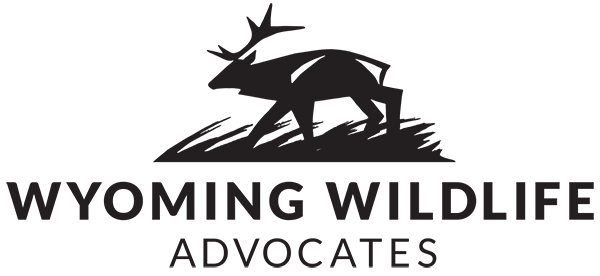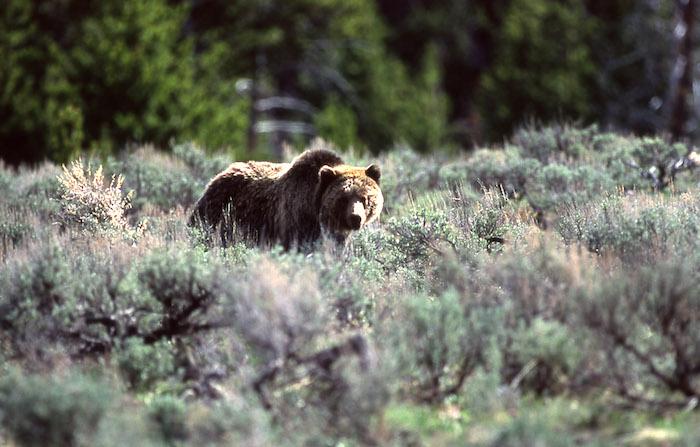by Kurt Repanshek/National Parks Traveler | NOVEMBER 20, 2016
Just one vote against a conservation strategy intended to see that grizzly bears in the Greater Yellowstone Ecosystem thrive after they lose Endangered Species Act protections was voiced, and that came from the superintendent of Yellowstone National Park, the core of the ecosystem and heart of grizzly bear recovery.
Whether Sue Masica, the regional director for the National Park Service’s sprawling Intermountain Region who must sign off on the strategy, will share Dan Wenk’s concerns remains to be seen. She was traveling Friday and not available for comment. The two are expected to talk about the matter in the coming weeks.
But Superintendent Wenk in the past has said any strategy that allows the hunting of grizzly bears in the John D. Rockefeller, Jr. Memorial Parkway that lies between Yellowstone and Grand Teton National Park would not gain Park Service support. So it shouldn’t be a great surprise that he voted against the conservation strategy that was approved by the Yellowstone Ecosystem Subcommittee of the Interagency Grizzly Bear Committee last Wednesday.
On Thursday, the Yellowstone superintendent also expressed concerns about the “ambiguity” of the conservation strategy’s intent to continue to base grizzly bear populations on the so-called Chao2 estimator, which factors in numbers of grizzly sows not observed by researchers working on estimates. While the conservation strategy said the Chao2 methodology would be used for the “foreseeable future,” Superintendent Wenk wanted greater assurance that Chao2 would remain in the plan.
Some see the Chao2 method as being too conservative, and that the grizzly bear population could be substantially higher than the nearly 700 bears thought to be in the ecosystem. If the population is, for example, actually 1,100 bears, then quotas for hunters could be higher. As a result, there could be pressure down the line to move to a more liberal estimator that could allow Wyoming, Montana, and Idaho to sell more bear hunting licenses.
Interestingly, while Superintendent Wenk voted against the conservation strategy, Grand Teton National Park’s representative at the meeting on Wednesday, Sue Consolo-Murphy, the park’s chief of science and resource management, supported it.
“There’s a lot of the conservation strategy that I think does a great deal to address how the agencies have committed in the long-term to maintain a stable population of bears, and most importantly to maintain the habitat,” she said Friday.
“Grand Teton, at this park, we’re comfortable with the conservation strategy and we think it does what the conservation strategy was intended to do,” added park spokeswoman Denise German, who sat in on the phone call. “It was all the agencies coming together and working collaboratively.”
What remains to be seen is which park Regional Director Masica sides with.
What isn’t in the conservation strategy is not only whether hunting will be allowed within the Rockefeller Parkway, but also whether grizzly bears could be hunted on private and state inholdings that lie within Grand Teton’s boundaries.
“We really haven’t discussed that very much,” Ms. Consolo-Murphy replied when asked about the inholdings. “There has been some direction through the Park Service about what the legalities of hunting on inholdings are. Consistent with that, we would have to defer to whatever is legal and allowable.”
She was referring to a November 2014 decision made by regional Park Service officials that gave Wyoming officials control over wildlife management on private and state lands within Grand Teton. That finding prompted a lawsuit by the National Parks Conservation Association and the Greater Yellowstone Coalition. They maintain that there is ample evidence in court records going back decades that supports the authority of the Park Service to manage wildlife on all lands within a unit of the National Park System, regardless of ownership.
Not only does the conservation strategy, which has not been released for public review and comment, not discuss hunting in the Parkway or within Grand Teton’s borders on inholdings, according to those who attended last week’s meeting, but the memorandum of understanding signed by the states of Wyoming, Idaho, and Montana regarding grizzly bear management also is silent on those issues.
“How hunting might occur, and where, was never intended to be in the conservation strategy,” Ms. Consolo-Murphy said. “Those things are addressed in the state management plans.”
So far, Wyoming’s Game and Fish Department has not outlined specific hunting areas for grizzly bears. The state’s chief game warden, Brian Nesbik, was not in his office Friday and couldn’t be reached for comment on whether the state would place the Parkway and the inholdings off-limits to hunting. Grand Teton officials have had many conversations with Wyoming officials regarding grizzly delisting and possible hunting areas, and “(T)hey’ve made it apparent that at least at this time and for the foreseeable future that’s not high on their agenda,” Ms. Consolo-Murphy said of hunting on the inholdings.
At NPCA, Yellowstone Program Manager Stephanie Adams was disappointed with the subcommittee’s decision to recommend the conservation strategy to the U.S. Fish and Wildlife Service.
“What we really should be concerned about is we have Yellowstone’s leadership and scientists standing up and saying this proposal does not protect grizzly bears, and that should be a key and a sign that we should not be moving forward with this proposal,” she said Friday.

